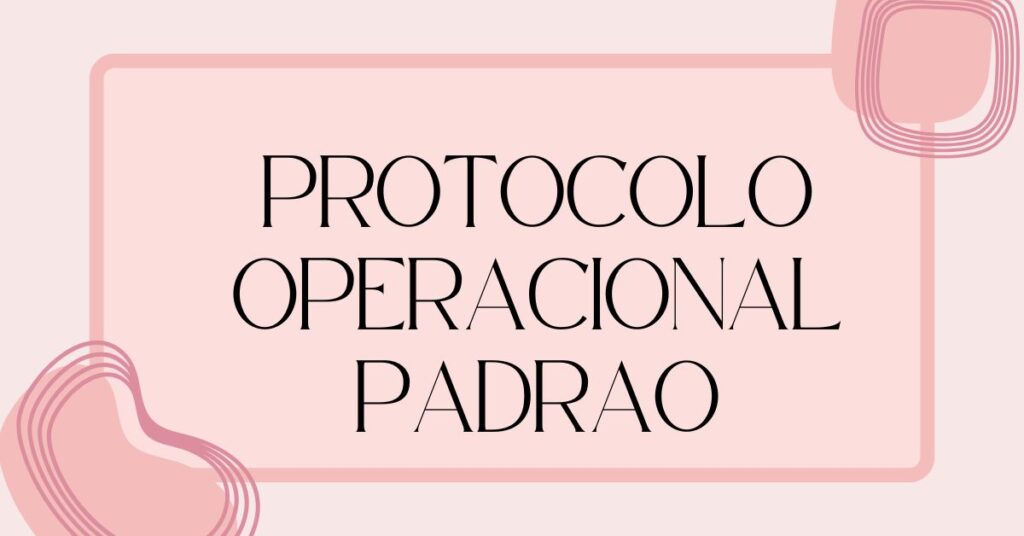Introduction
In every business, organization, or industry, consistency and efficiency are essential. Whether you’re managing a healthcare unit, a restaurant kitchen, or a manufacturing plant, the way tasks are performed should follow a standardized process. That’s where Protocolo Operacional Padrao (POP) comes in.
“Protocolo Operacional Padrao” is Portuguese for Standard Operating Procedure (SOP). It is a formal document that outlines step-by-step instructions for carrying out routine operations. This guide is designed to help you understand POPs in simple English and how they can benefit your business.
What is a Protocolo Operacional Padrao (POP)?
A POP is a written document that describes how to perform a specific activity or process. It ensures that tasks are carried out in a consistent, safe, and effective way. The goal is to reduce errors, increase productivity, and maintain quality standards regardless of who performs the task.
It works like a detailed recipe for operations. Whether you’re baking bread, cleaning hospital tools, or assembling machines, a POP ensures everyone follows the same exact steps.
Benefits of POPs
Using POPs provides several key benefits for any organization:
1. Consistency and Standardization
Every team member follows the same procedure, resulting in predictable and uniform outcomes.
2. Efficiency and Time-Saving
Tasks are completed faster because employees don’t waste time figuring out what to do next.
3. Training Made Easy
New employees can quickly learn how to do their work by following POPs.
4. Error Reduction
Clear instructions help prevent mistakes, especially in tasks involving safety or quality control.
5. Improved Safety
POPs include safety measures and warnings, reducing the chance of accidents.
6. Accountability and Compliance
POPs make it easier to monitor task completion and comply with regulations or certifications.
Where is POP Used?
POPs are useful in almost every sector. Here are some examples:
- Healthcare: Patient care routines, sterilization, medication handling
- Food Industry: Cooking procedures, hygiene practices, food storage
- Manufacturing: Equipment operation, quality control, assembly processes
- Retail: Cash handling, product returns, inventory checks
- Government and Services: Application processing, public services, customer support
Key Components of a POP
A good POP should be clear, detailed, and easy to follow. It usually includes the following elements:
- Title: The name of the process
- Purpose: Why the procedure is necessary
- Scope: Where and when the POP applies
- Responsibilities: Who is in charge of performing or supervising the task
- Materials and Equipment: Tools or supplies required
- Step-by-Step Instructions: Each action explained clearly
- Safety Guidelines: Warnings or risks to avoid
- Date and Version: Document version and approval information
How to Create a POP
Creating a POP involves a few straightforward steps:
Step 1: Identify the Task
Choose a process that needs consistency or has safety/quality risks.
Step 2: Observe and Document
Watch the task being done by an experienced employee. Write down every step they take.
Step 3: Draft the Instructions
Use simple, clear language. Write steps in the correct sequence. Use bullets or numbers.
Step 4: Review with the Team
Have other employees test the POP. Collect feedback and make adjustments.
Step 5: Finalize and Distribute
Once approved, share the POP with all team members and store it somewhere accessible.
Step 6: Update Regularly
Review and revise the POP at least once a year or whenever there is a change in the process.
Example of a Simple POP
Title: Cleaning Coffee Machine
Purpose: To ensure the machine is cleaned safely and thoroughly.
Scope: All baristas at Cafe XYZ, daily after closing
Tools Needed: Cleaning cloth, detergent, brush, gloves
Steps:
- Turn off the machine and unplug it
- Remove all detachable parts
- Wash parts with detergent and warm water
- Wipe the body of the machine with a damp cloth
- Reassemble the machine
- Plug it back in and perform a test run
Safety Notes:
- Always unplug the machine before cleaning
- Wear gloves when handling hot parts or detergent
Version: v1.2 | Updated: August 2025
Tips for Writing Effective POPs
- Use plain, easy-to-understand language
- Avoid jargon or technical terms unless necessary
- Use bullet points or numbered lists
- Add diagrams or pictures if helpful
- Make the format consistent across all POPs
Frequently Asked Questions (FAQs)
Q1: Can small businesses use POPs?
Yes! POPs are useful for businesses of all sizes. Even a small bakery or salon can benefit.
Q2: Do I need software to create POPs?
No. You can create POPs using Microsoft Word, Google Docs, or Excel.
Q3: How often should I update my POPs?
At least once a year or whenever a process changes.
Q4: What is the difference between POP and SOP?
They are the same. POP is the Portuguese term for SOP (Standard Operating Procedure).
Final Thoughts
A Protocolo Operacional Padrao is more than just a document—it’s a powerful tool that helps your business run smoothly. With POPs, you reduce mistakes, improve safety, train staff faster, and deliver consistent results. Start creating your POPs today, and build a more efficient and reliable organization.
Whether you run a local store or a national business, a good POP system can help you work smarter and grow faster.
For more information, visit: trendactuallys.
